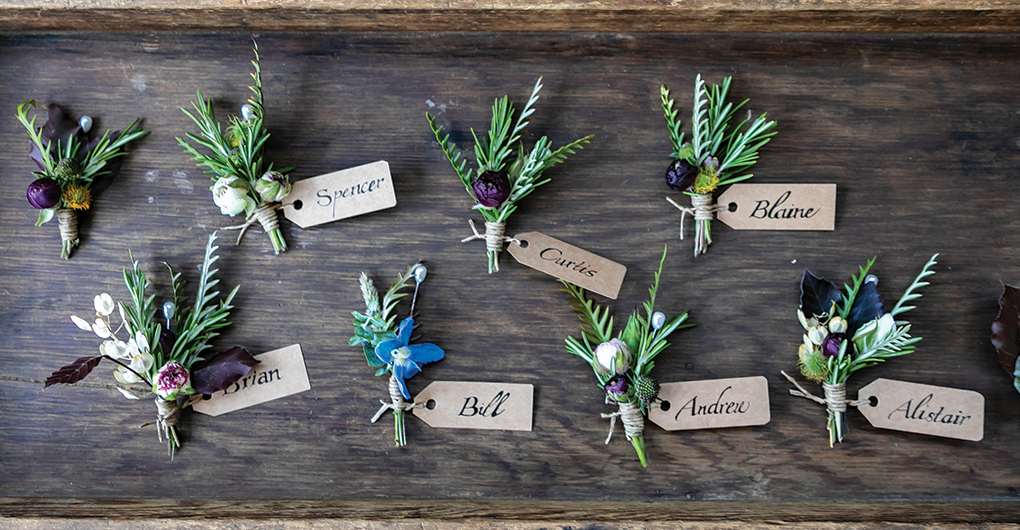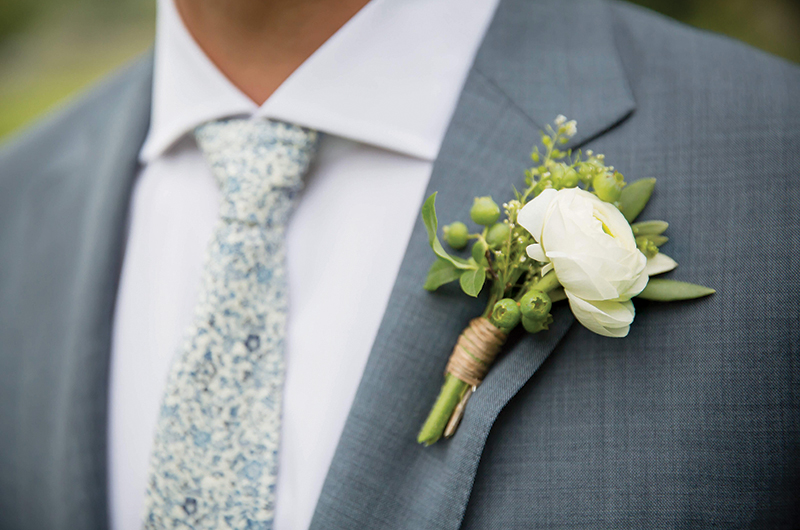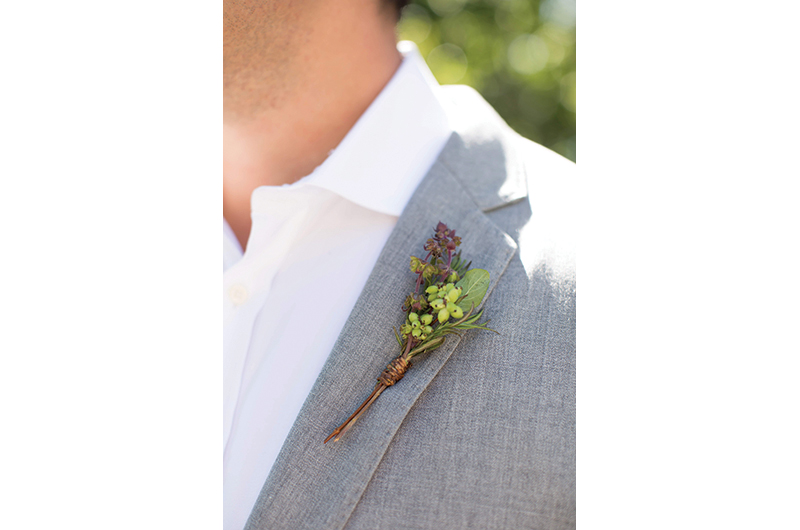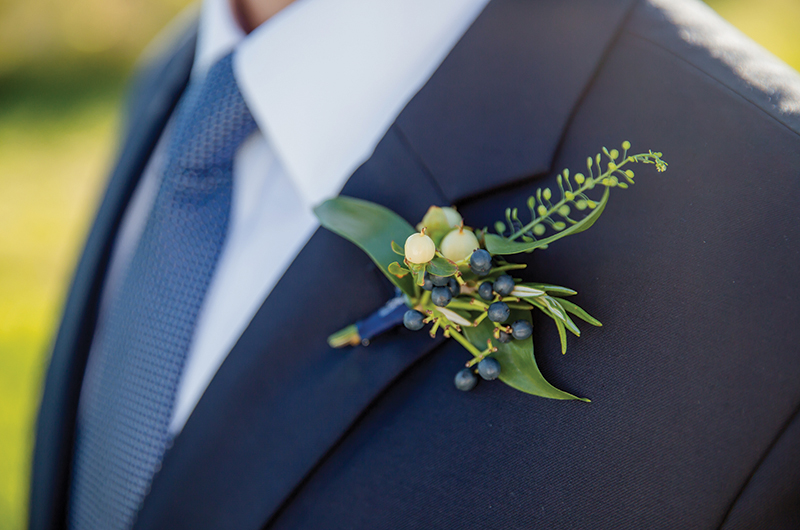A boutonniere isn’t just a decoration. It’s a sign of love, a piece that ties a groom to his bride.
But the use of boutonnieres didn’t start out as a wedding-day ritual. It’s a tradition that dates back to medieval times, when a female admirer would give the man of her choosing a token of her affection to wear on the battlefield – a practice known as “wearing a lady’s colors.” Over the years the custom further evolved from a bride taking a flower from her bouquet and pinning it to her groom’s lapel, to the modern-day convention of having a florist craft a boutonniere to complement the style and colors of a bride’s bouquet.
These days, boutonnieres no longer necessarily adhere to this time-honored tradition. They might be big and bold or small and refined. They may contain expressions of interest or elements of personal importance. They don’t even have to contain flowers at all.
To celebrate the mighty possibilities of the tiny boutonniere, we’ve rounded up some of our favorite examples from recent Island weddings. Together they showcase the many ways in which men can customize their wedding-day attire.
Make a bold statement
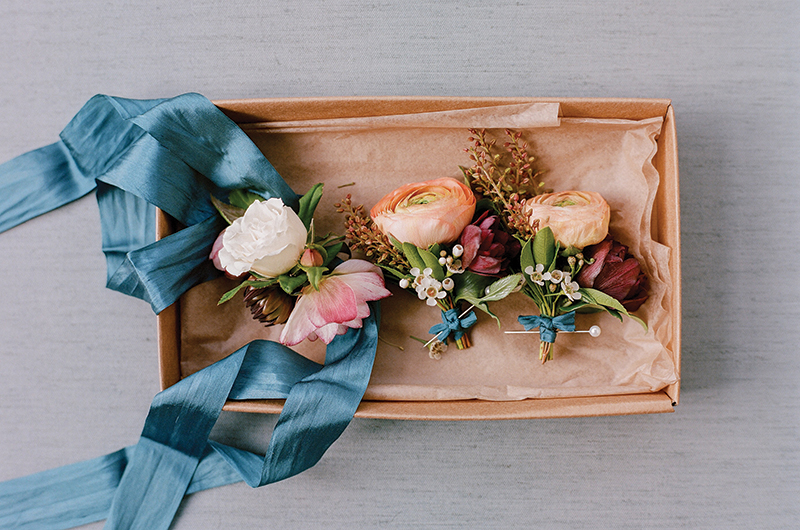
Jocelyn Filley | Morrice Florist
At Morrice Florist in Vineyard Haven, owner Emily Coulter says that she and her team typically craft boutonnieres using the same flowers and color palette as the bouquet so that they complement each other. But on occasion the designers get to have a little more fun. “Every now and then we get a groom that is very serious about how big or small or long his boutonniere should be,” says Coulter. Want your lapel to make just as much of a statement as your bride’s bouquet? Coulter suggests big, bright, and eye-catching blooms such as ranunculus, dahlia, double tulip, japonica, or dried flowers. To make it pop even more, they can layer in textured elements such as eucalyptus, wax flower, herbs, or celosia before securing it all with a colorful piece of ribbon. “It’s so fun working a groom’s individual style into such a mini floral piece,” says Coulter.
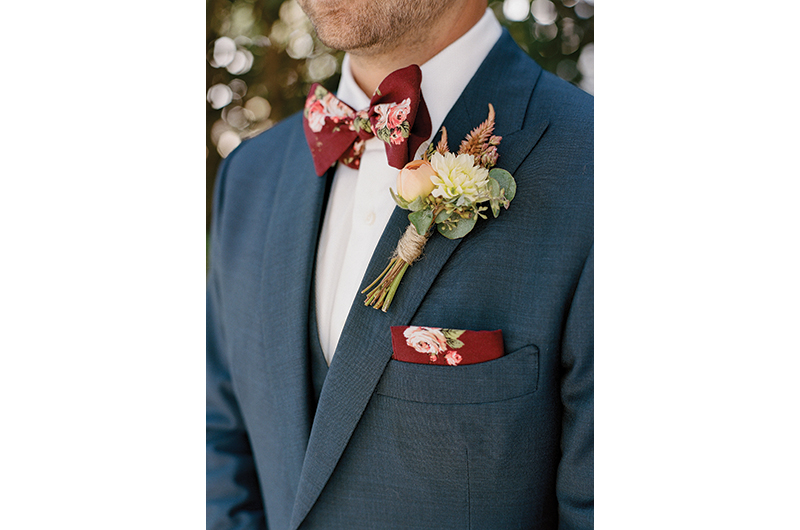
Jocelyn Filley | Morrice Florist
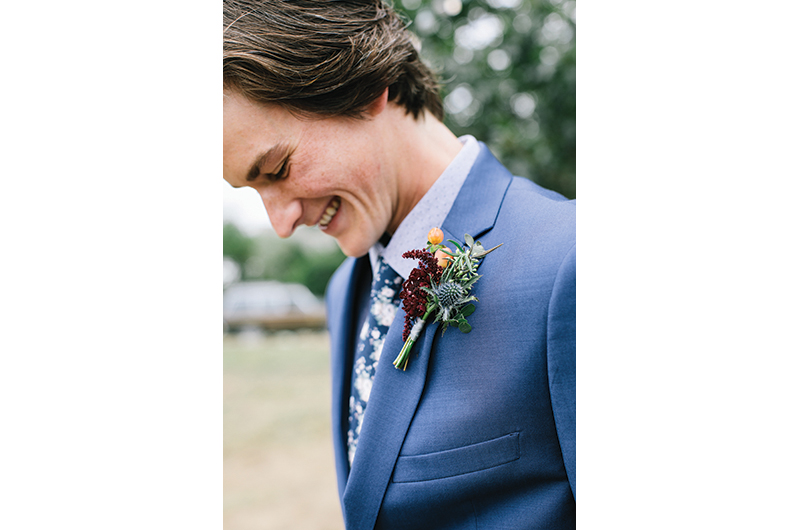
Elizabeth Cecil | DIY
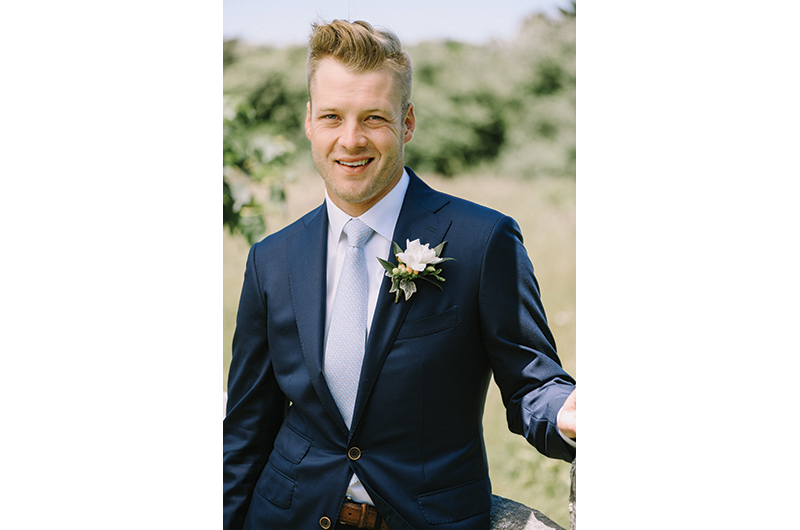
David Welch | Flowers by Donaroma’s
Add an embellishment
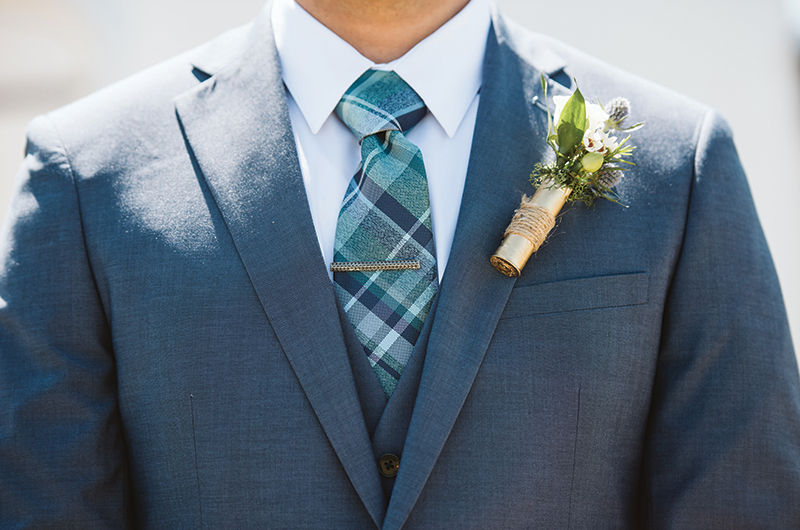
Mila Lowe | Deb White
“It's a wonderful thing to personalize something that goes on you for this special day,” says Mariko Kawaguchi of Flowers by Donaroma’s in Edgartown. In her years as a floral designer she has incorporated many objects into boutonnieres that reflect a groom’s hobbies or interests, including nuts and bolts for a groom who was a plumber, a small wrench for a mechanic, and a fishing lure for an avid angler. “In terms of inanimate objects, the number one thing people ask us to do are lures,” she says. Flowers by Donaroma’s is also happy to use items that have sentimental value for a couple. “We have incorporated [meaningful pieces of fabric] in bouquets, and the bride wanted to have a touch of that fabric in a ribbon wrapper or a lining on the boutonniere.”
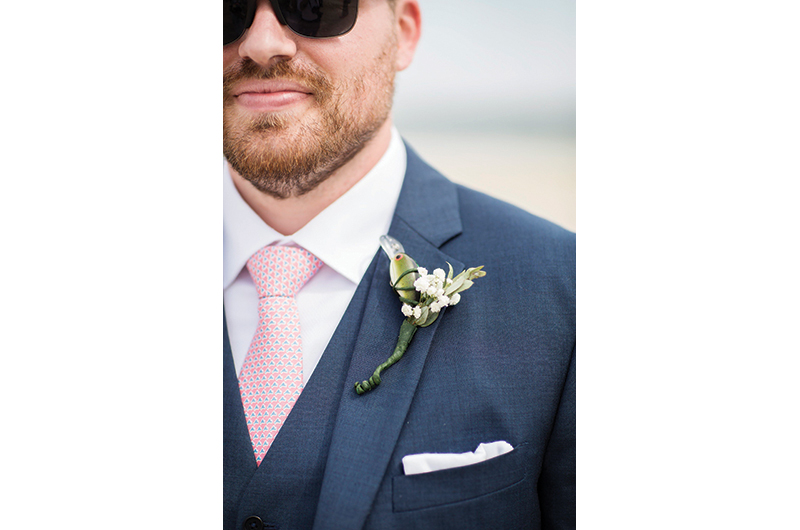
Tim Correira | Gracie ’n Moe
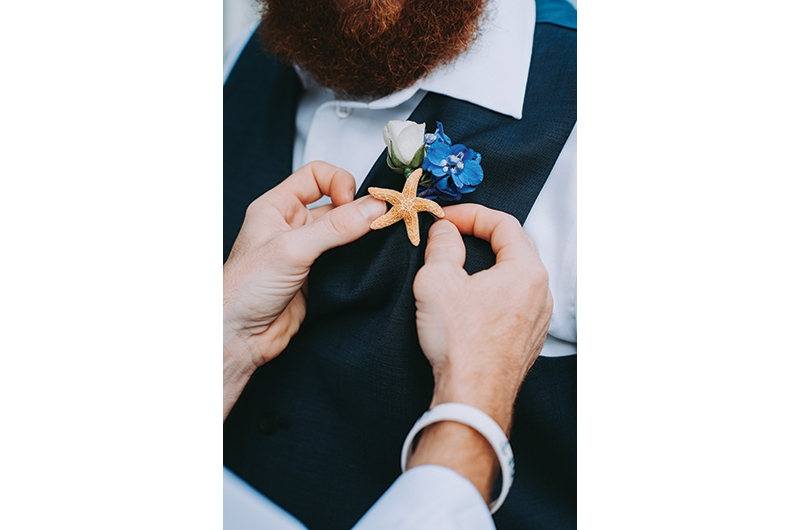
Mila Lowe | The Green Petal
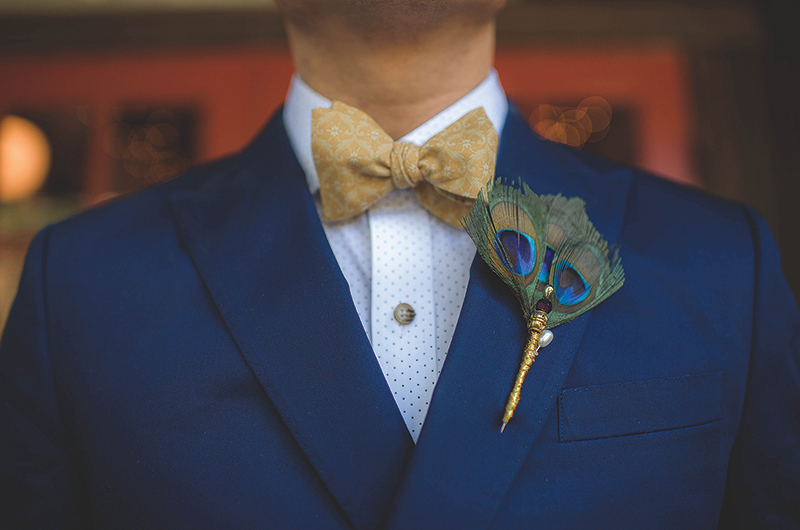
Voltaire & Ves Photography | DIY
Keep it simple
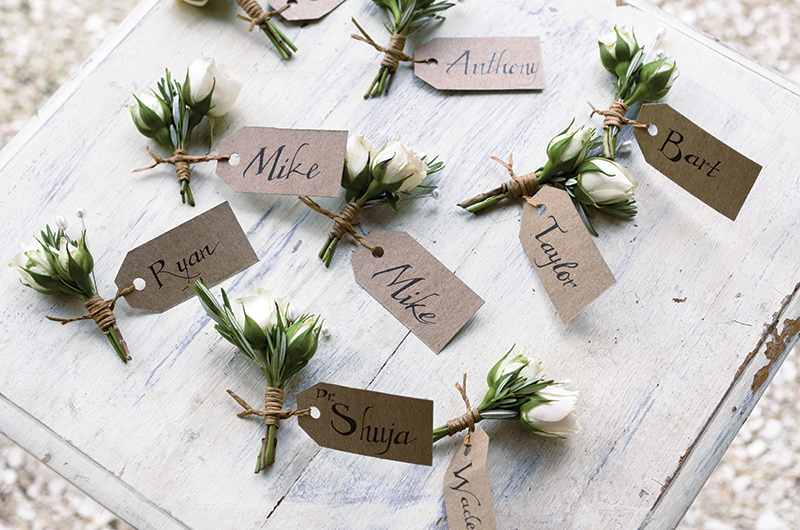
Christine Sargologos | Tea Lane Farm
Sometimes less really is more, especially if you don’t want to wear your heart on your lapel. “The simplicity [of the boutonniere] kind of says it all,” says Krishana Collins of Tea Lane Farm in Chilmark. “We like to be creative, so any color palette will apply. But we often find that a neutral color palette is what people prefer.” Some go-to blooms include ranunculus, strawflower, hellebore, or star-of-Bethlehem. And Collins has worked with quite a few grooms who want herbs incorporated into the piece too, such as lavender, thyme, or rosemary. To finish the look, Collins and her team often tie the boutonniere with a simple piece of twine and a personalized tag for the groom and his groomsmen.

